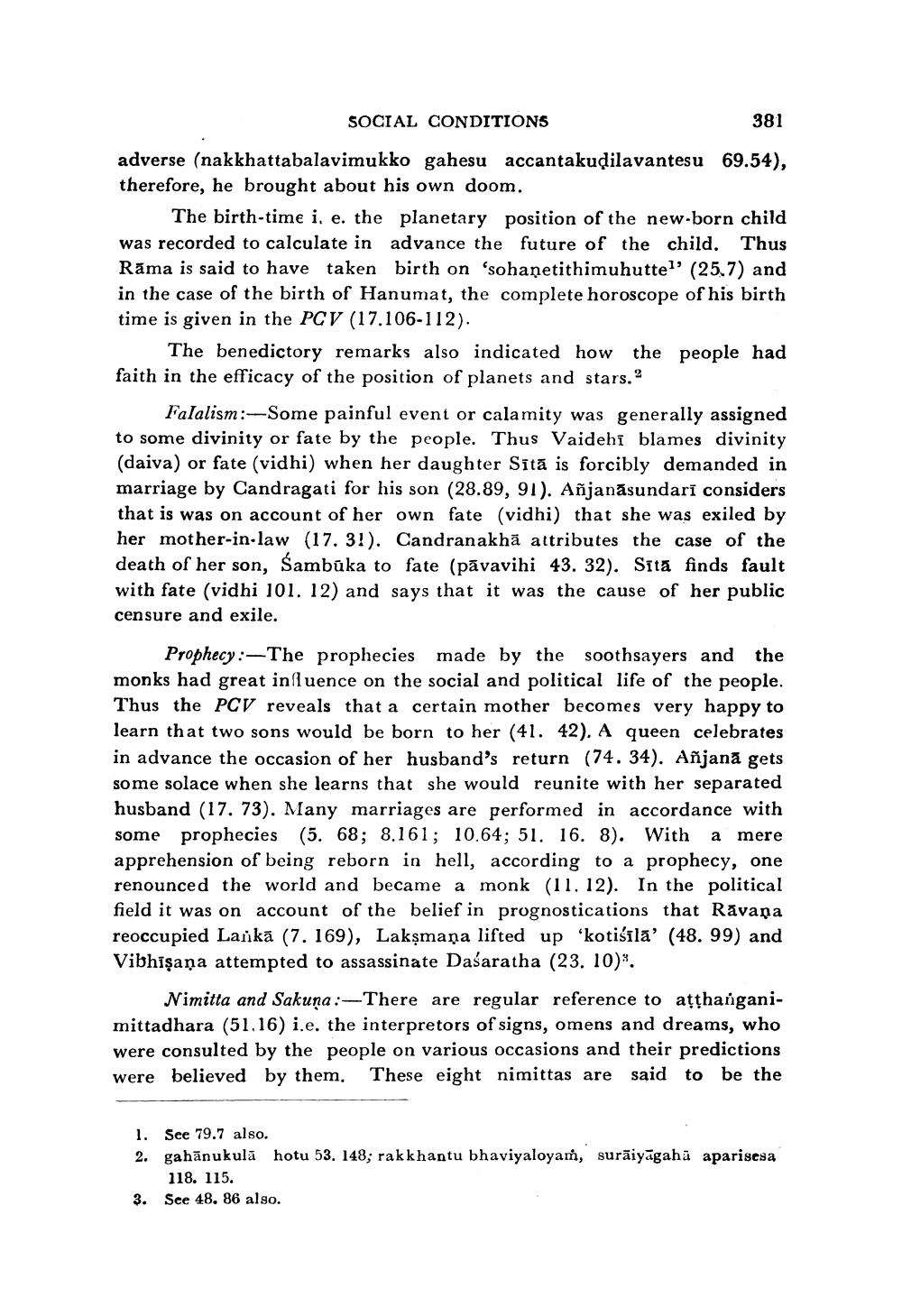________________
SOCIAL CONDITIONS
381
adverse (nakkhattabalavimukko gahesu accantakudilavantesu 69.54), therefore, he brought about his own doom.
The birth-time i. e. the planetary position of the new-born child was recorded to calculate in advance the future of the child. Thus Rāma is said to have taken birth on 'sohanetithimuhuttel' (25.7) and in the case of the birth of Hanumat, the complete horoscope of his birth time is given in the PCV (17.106-112).
The benedictory remarks also indicated how the people had faith in the efficacy of the position of planets and stars.”
Falalism:--Some painful event or calamity was generally assigned to some divinity or fate by the people. Thus Vaidehi blames divinity (daiva) or fate (vidhi) when her daughter Sita is forcibly demanded in marriage by Candragati for his son (28.89, 91). Añjanāsundari considers that is was on account of her own fate (vidhi) that she was exiled by her mother-in-law (17. 3!). Candranakha attributes the case of the death of her son, Sambūka to fate (pāvavihi 43. 32). Sīta finds fault with fate (vidhi 101. 12) and says that it was the cause of her public censure and exile.
Prophecy :- The prophecies made by the soothsayers and the monks had great influence on the social and political life of the people. Thus the PCV reveals that a certain mother becomes very happy to learn that two sons would be born to her (41. 42). A queen celebrates in advance the occasion of her husband's return (74. 34). Añjana gets some solace when she learns that she would reunite with her separated husband (17. 73). Many marriages are performed in accordance with some prophecies (5. 68; 8.161; 10.64; 51. 16. 8). With a mere apprehension of being reborn in hell, according to a prophecy, one renounced the world and became a monk (11, 12). In the political field it was on account of the belief in prognostications that Ravana reoccupied Laikā (7.169), Lakşmaņa lifted up -kotiśīla' (48. 99) and Vibhişaņa attempted to assassinate Dasaratha (23. 10).
Nimitta and Sakuna : There are regular reference to atthanganimittadhara (51.16) i.e. the interpretors of signs, omens and dreams, who were consulted by the people on various occasions and their predictions were believed by them. These eight nimittas are said to be the
1. See 79.7 also. 2. gahānukulā hotu 53. 148; rakkhantu bhaviyaloyam, surāiyāgahă aparisesa
118. 115. 3. Sce 48, 86 also.
19




